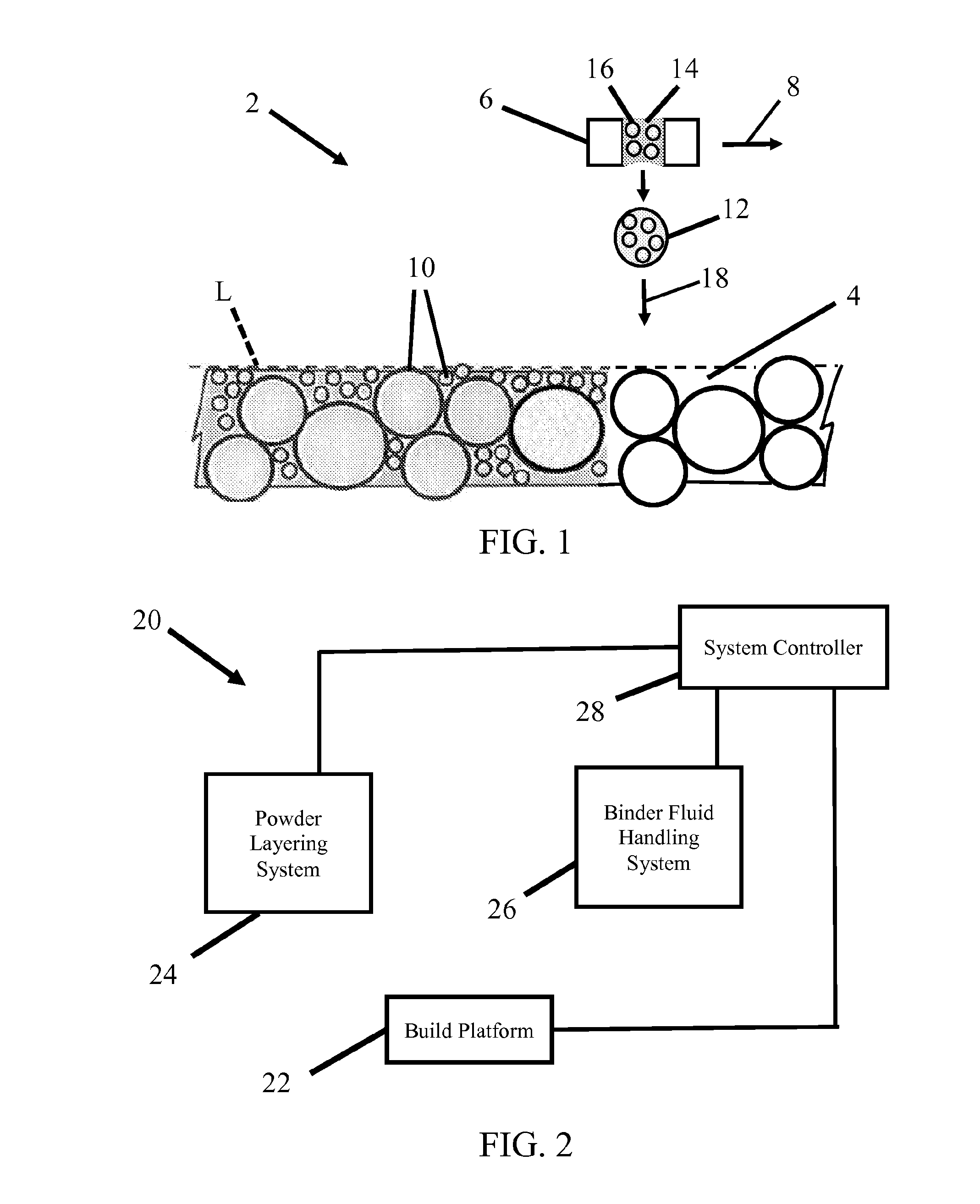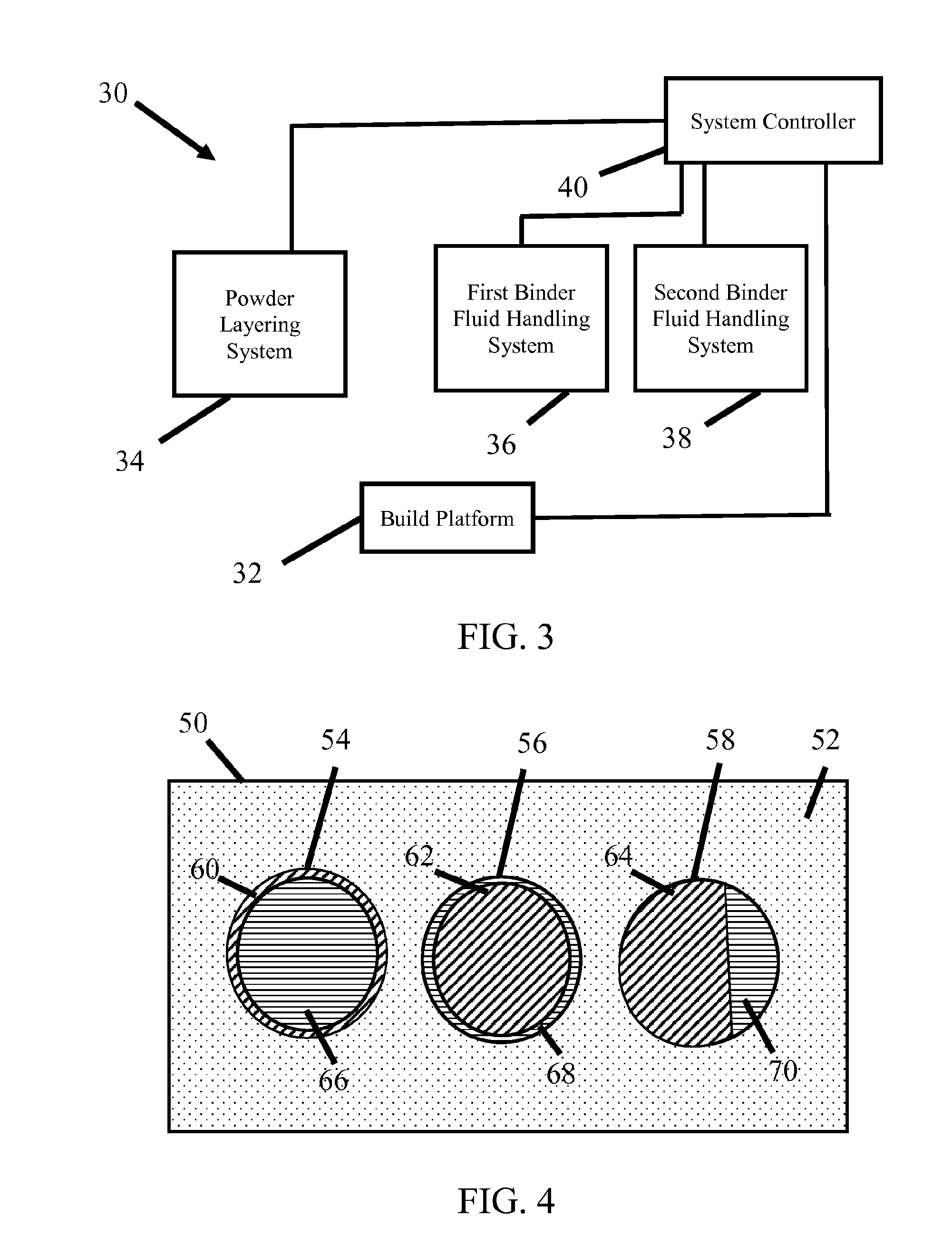Methods and Systems for Three-Dimensional Printing Utilizing Multiple Binder Fluids
a three-dimensional printing and fluid technology, applied in the direction of additive manufacturing processes, manufacturing tools, solid and fluid manufacturing, etc., can solve the problems of essentially the same apparent density of the printed part, the surface of the resulting article has a contour, and the conventional three-dimensional printing process has its drawbacks, so as to improve the surface roughness and contour resolution of the final article, improve the surface finish, and increase the density of the printed article
- Summary
- Abstract
- Description
- Claims
- Application Information
AI Technical Summary
Benefits of technology
Problems solved by technology
Method used
Image
Examples
Embodiment Construction
[0024]In this section, some preferred embodiments of the present invention are described in detail sufficient for one skilled in the art to practice the present invention without undue experimentation. It is to be understood, however, that the fact that a limited number of preferred embodiments are described herein does not in any way limit the scope of the present invention as set forth in the appended claims. It is to be understood that whenever a range of values is described herein or in the appended claims that the range includes the end points and every point therebetween as if each and every such point had been expressly described. Unless otherwise stated, the word “about” as used herein and in the appended claims is to be construed as meaning the normal measuring and / or fabrication limitations related to the value which the word “about” modifies. Unless expressly stated otherwise, the term “embodiment” is used herein to mean an embodiment of the present invention.
[0025]The me...
PUM
| Property | Measurement | Unit |
|---|---|---|
| Length | aaaaa | aaaaa |
| Diameter | aaaaa | aaaaa |
| Diameter | aaaaa | aaaaa |
Abstract
Description
Claims
Application Information
 Login to View More
Login to View More - R&D
- Intellectual Property
- Life Sciences
- Materials
- Tech Scout
- Unparalleled Data Quality
- Higher Quality Content
- 60% Fewer Hallucinations
Browse by: Latest US Patents, China's latest patents, Technical Efficacy Thesaurus, Application Domain, Technology Topic, Popular Technical Reports.
© 2025 PatSnap. All rights reserved.Legal|Privacy policy|Modern Slavery Act Transparency Statement|Sitemap|About US| Contact US: help@patsnap.com



